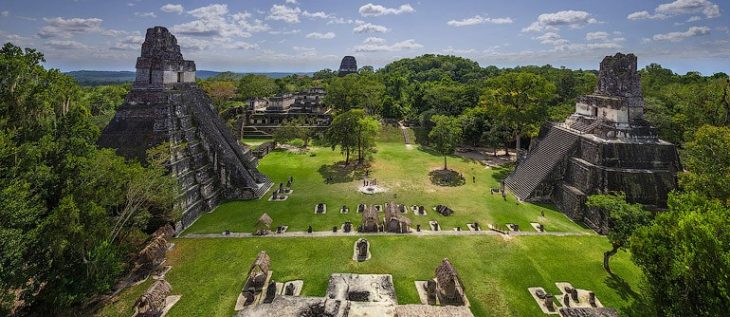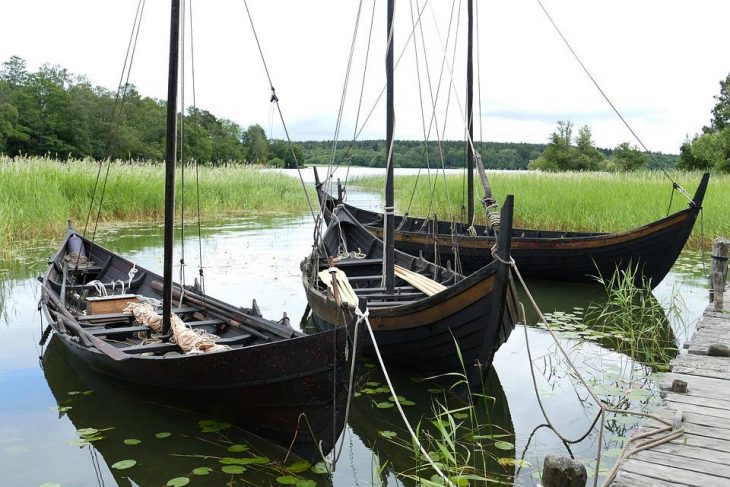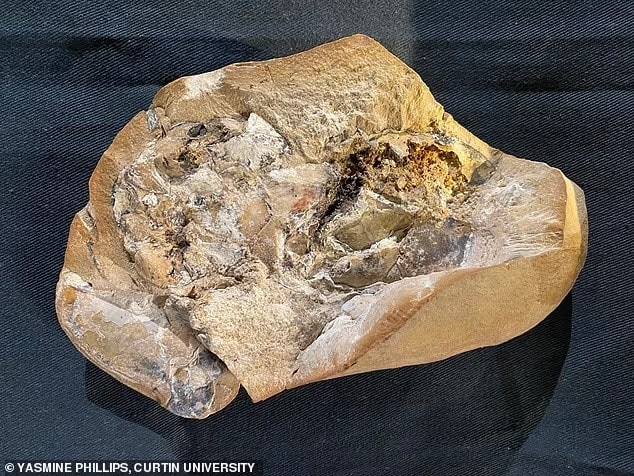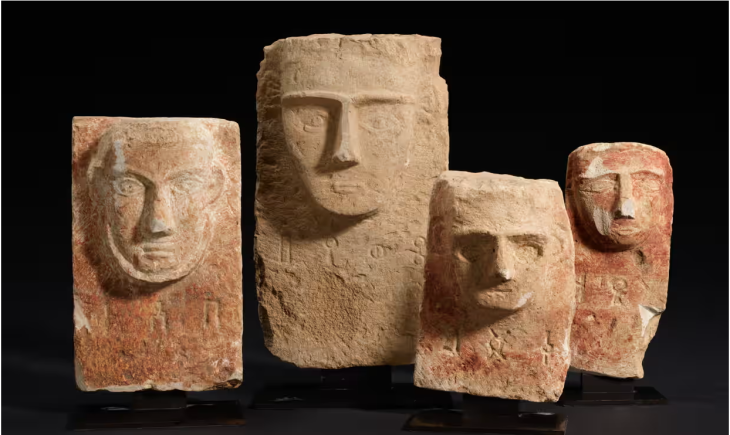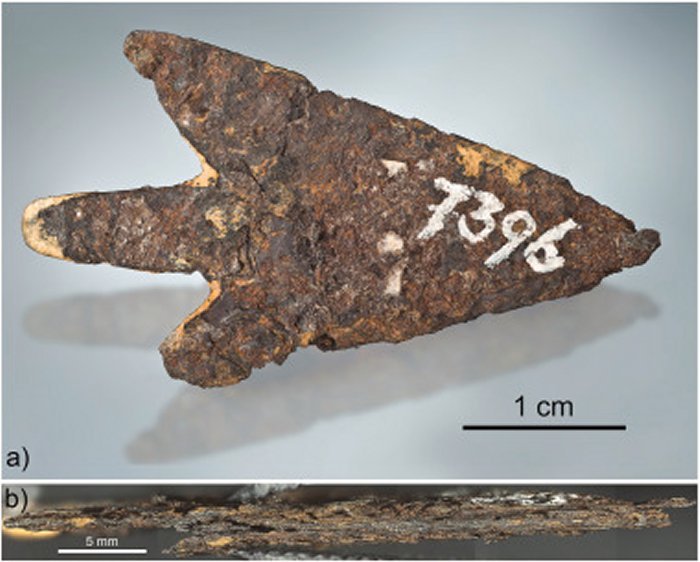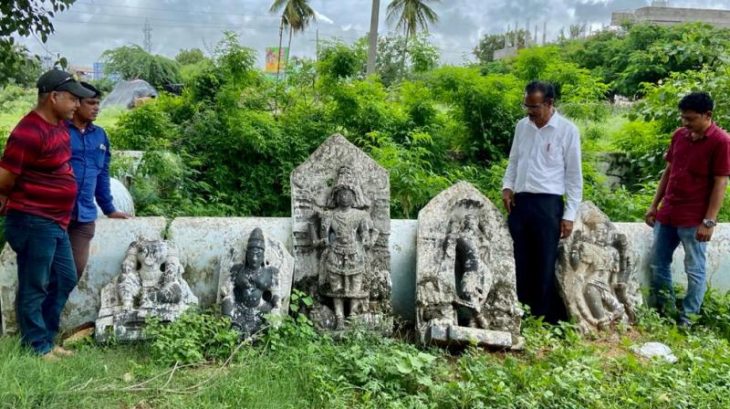One of the two ancient marble quarries, thought to have begun the sculpture, the greatest art of antiquity, is located near the coastal settlement of Apollonas of Naxos, the largest of the Cyclades group of islands in the Southern Aegean.
Naxos has a great wealth of monuments from various eras that attest to the cultural changes that occurred in the Aegean over the centuries due to its geology, history, size, and location.
The road from Hora to the northern village of Apollonas is 37 kilometers long. A little above the village of Apollonas, there is the Apollon quarry, one of the rare stone quarries whose name has been known since ancient times.
On the hill and slopes of the former quarry, one can still see the enormous but unfinished 11-meter statue (Kouros) of Dionysus, as well as numerous fragments of other unfinished statues, architectural building pieces, chisel marks, and carved surfaces.
The Kouros is an extraordinarily large statue: thus even slightly larger than the Colossus of Delos, a statue representing the god Apollo, the largest marble statue ever erected in Greece, which also came from Naxos.
📣 Our WhatsApp channel is now LIVE! Stay up-to-date with the latest news and updates, just click here to follow us on WhatsApp and never miss a thing!!
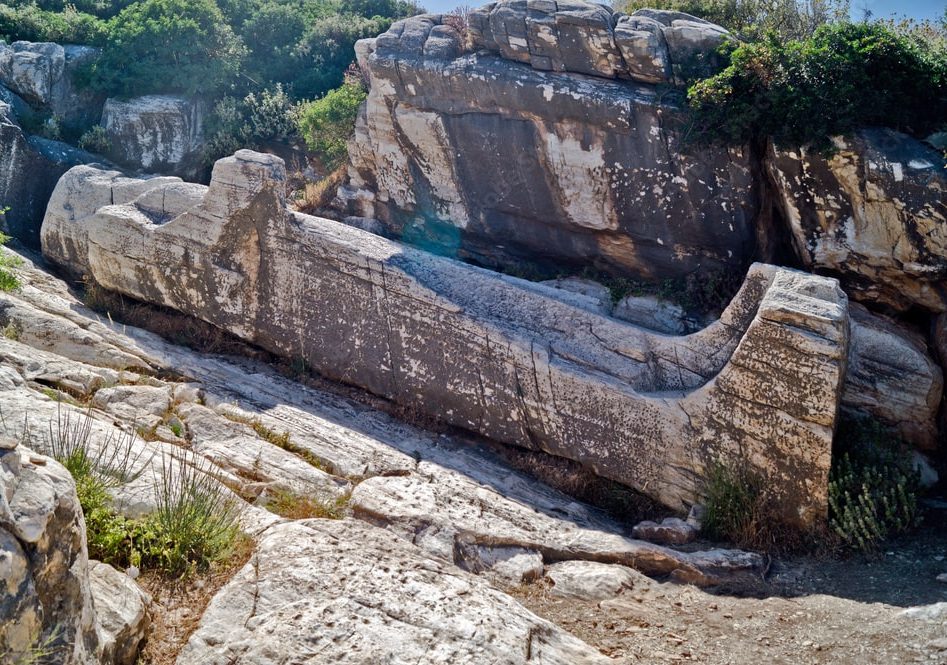
A monumental statue that descriptions do not do justice to, because it is more than important, more than majestic.
It’s almost unimaginable that, on an island in the middle of the Aegean, at a spot next to a touristic seaside village, a supine statue 10.7 meters long and weighing 80 tons has survived for 27 centuries, in the very same ancient quarry where it was originally created. The Kouros of Apollonas, also called the Colossus of Dionysus is a sight that everyone should see at least once.
The top of the hill above the quarry features an inscription that reads “ΟΡΟΣ ΙΕΡΟΝ ΧΩΡΙΟΥ ΑΠΟΛΛΩΝΟΣ” (“Holy Mountain of Apollo”). It dates to the 7th-6th century BC and probably belongs to a sanctuary of the god that existed there.
Because it was near the town of Apollonas, the statue was previously thought to be an Apollo statue. Because of its proximity to the Apollo sanctuary, Bondelmonte referred to it as a “statue Apollonis” in the fifteenth century. In 1840, Ludwig Ross referred to it as the Statue of Apollo. Although Wilhelm von Massow identified the statue as Dionysos in 1932, the name stuck for a long time. It is now classified as a kouros.
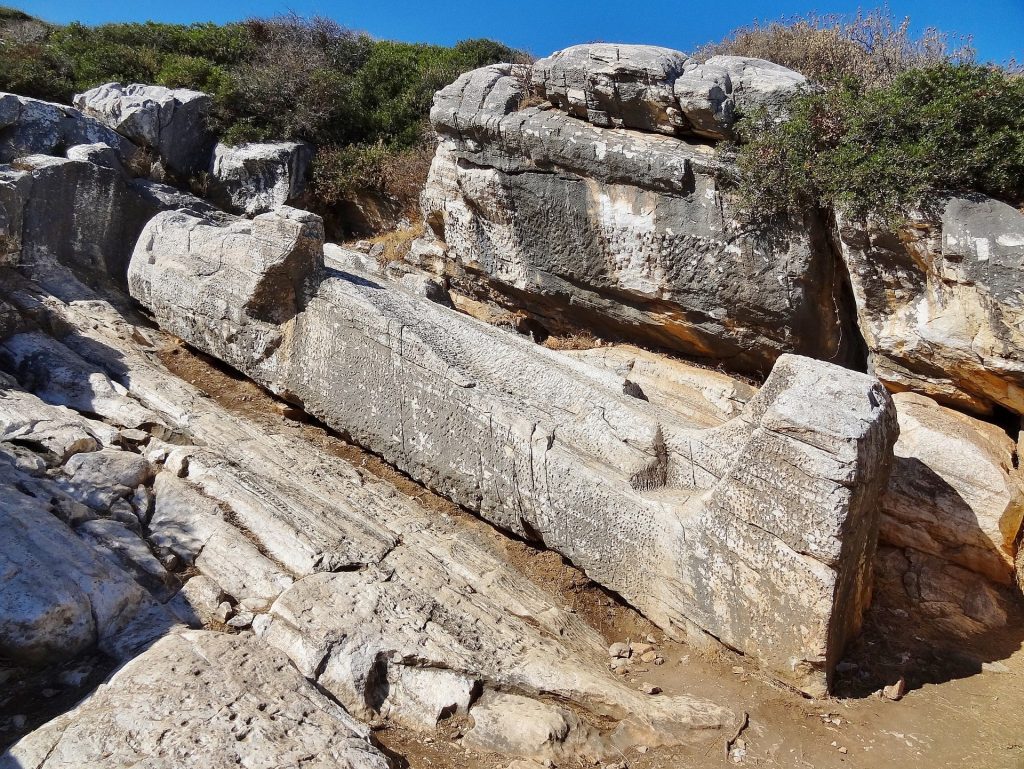
Most kouros statues depict naked young men with their arms at their sides. It is clear, however, that the Kouros of Apollonas was to be a depiction of an older man with a beard, with his right arm stretched out in front of him.
The figure is roughly carved, but the body, head with beard and ears, and beginning of the hair are all discernible. The stonemasons have cut the arms as rudimentary rectangles, and the shaping of the feet has begun; they are set on a 50 cm high plinth.
The archaic kouroi have usually been interpreted as depictions of Apollo. On account of its beard, the Kouros of Apollonas has instead been interpreted as the Greek god Dionysus.
Archaeologists believe that those statues were predestined to hold on to a temple roof, but their ancient sculptors abandoned them due to faults in the marble and stone used. The paradox in the case of this particular Kouros is that it did not come off after it was made, although there are no obvious defects in its construction.
It is a monument of immense value, because it is located in its natural environment and not in some museum, a fact which helps the viewer better appreciate the culture that developed on the islands during antiquity.



